© Good Travel Guide, May 2021 by Chloé Martin
Portugal has much to offer. Its rich culture, nature, and gastronomy have a taste that does not make you want to leave the country once you are in it. It is also home to incredibly generous and hospitable people. Well, it is for a reason that Portugal won the Best of Europe Award for sustainable tourism in 2019 at the ITB Berlin! We propose here a guide including 6 sustainable destinations in Portugal and, of course, sandy beaches and historical sites are on the agenda!
For all tastes, at all times, Portugal knows how to seduce. Let’s turn on the music, put some Fado background and embark on a journey you will never forget.
But who said a personal car was essential to travel in Portugal? Challenge accepted! Let’s travel at a slower pace, merge into the local communities and enjoy the views all the way long by using only more sustainable or shared ways of transportation, including bus, train, or bike.
Note: Recommended moments of the year to visit Portugal include late spring (May-June) and the end of Summer (September – October) to have the great weather of south Europe without having the crowds of the very high season.
The journey begins in Lisbon, the capital of the country which is easily accessible from anywhere in the world. Even though not part of our sustainable destinations, you might consider wandering in the streets of Alfama district, getting on the famous tram n°28 or taking a look at the view from one of the numerous “miradouros” of the city at your arrival there.
From this starting point, the itinerary is going to lead you to 6 very diverse green destinations, between beaches and hills, cities and villages.
Please note that this itinerary is a suggestion, but it is very flexible, so any destination can be skipped to make the trip shorter or if you want to spend more time somewhere else.
Pronto? Vamos!
Day 1: Nazaré, Oeste Region
How to get there?
- Bus Rede Expressos Lisbon – Nazaré
- Duration: 1h50
- Approximate cost: 12€
Note: The bus is an excellent way to discover a country. It allows you to enjoy the landscapes and views on the way and to be completely immersed with the locals of the country. It’s about living like a local and getting to know them!
The first destination of our trip is Nazaré, in the Oeste Region. This coastal city is known in the whole world for its famous gigantic waves after a Hawaiian surfer surfed there the biggest beach-breaking wave in the world. It is now a major surf spot for people coming from all over the world.
You can walk to the Miradouro da Nazaré or to the Pederneira Belvedere to have a better view from higher on the long sandy beach and the city. And why not enjoy the sunset over the beautiful Atlantic Ocean while dreaming of new horizons?
Cultural traditions are strong as well in the town and are to be discovered. Wander in the city for a while, enjoy its atmosphere and experience its culinary gems coming from the sea. Nazaré is indeed a major fishing area and the history of fishermen is anchored in its streets.
Note: On Saturdays in summer, you can attend the “Arte Xávega” show in the evening, which showcases fishing in Nazaré.
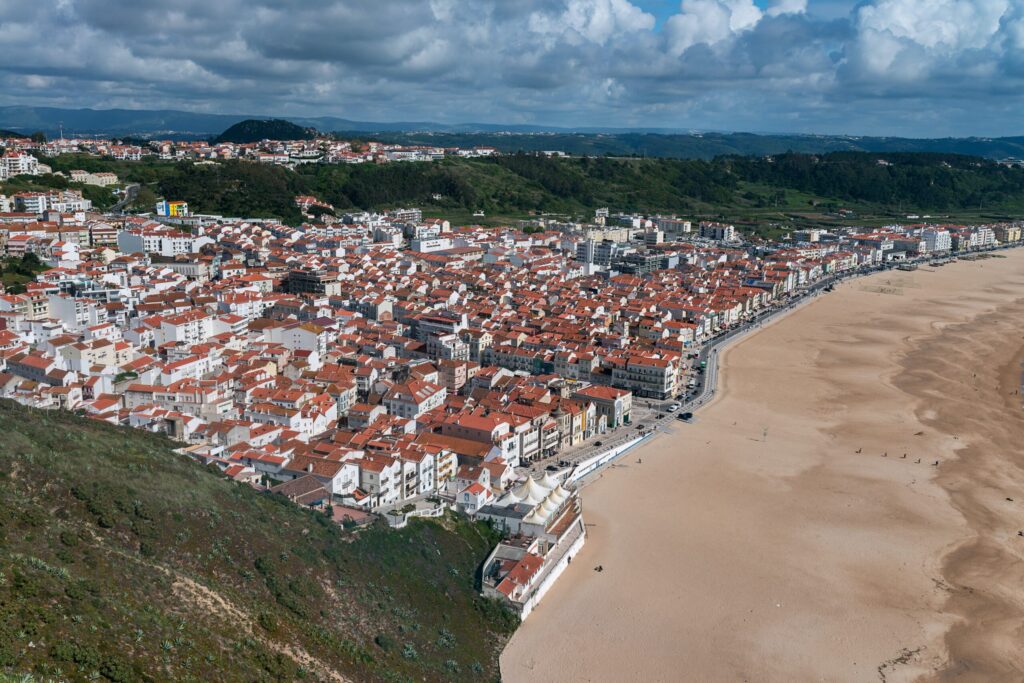
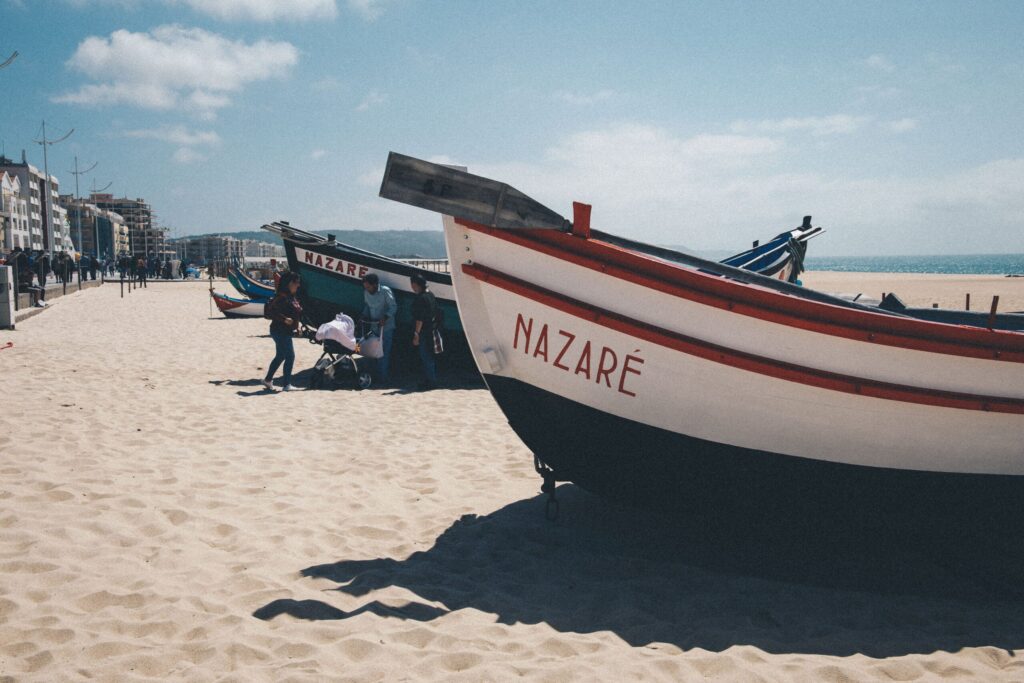
Day 2: Torres Vedras
How to get there?
- Bus Rede Expressos Nazaré – Caldas da Rainha – Torres Vedras
- Duration: 1h50
- Approximate cost: 12€
The second destination of our itinerary is Torres Vedras, still in the Oeste Region of Portugal. It is a coastal municipality with 20kms of sandy beaches. As you will arrive at the station which is more in the land, let’s visit the interior of the land. No worries, many other beaches are waiting for you later on! However, if you want to go to these beautiful beaches which are some of the best in Portugal, keep in mind that they are easily accessible by local bus. Torres Vedras is indeed certified as a Quality Coast destination so it would be a shame to miss that!
By the way, did you know that the municipality of Torres Vedras was the most extensive one in the region of Lisbon?
Visit the beautiful and authentic town center of the municipality. Discover the culture of the place with its numerous interpretation centers, cultural sites, and of course the castle of Torres Vedras. Enjoy the nice cafés and restaurants and don’t forget to try the local wine, the city has indeed been awarded as “European Wine City 2018” so it is something you do not want to miss.
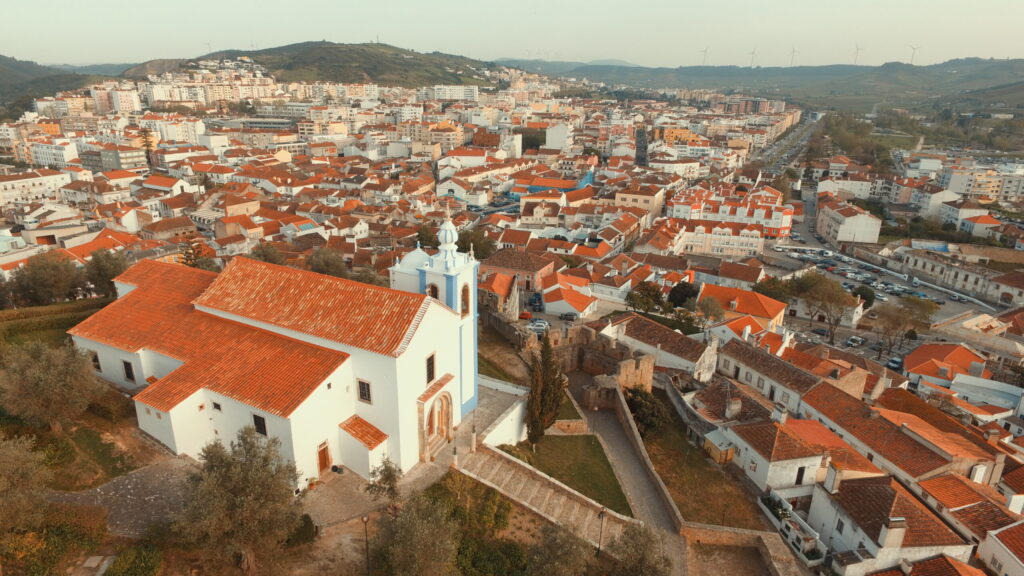
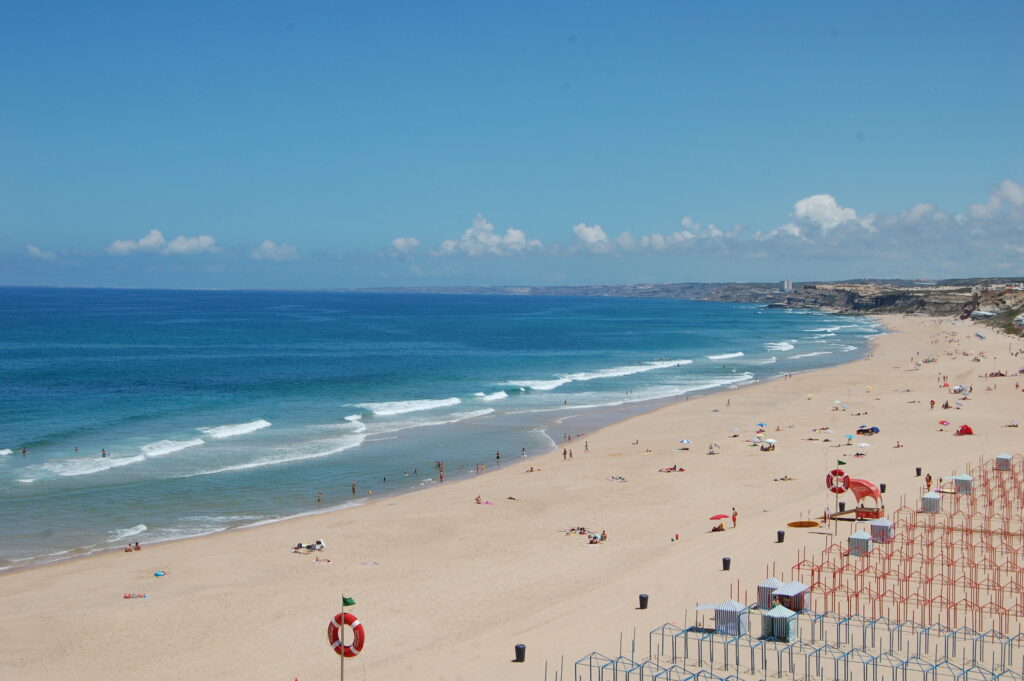
To move around in the city, you can use “Agostinhas”. This is Torres Vedras Bike sharing system and you can use them in the whole city center as long as you return them to a bike station within 4 hours. If you are interested, learn more about it here.
Get immersed in the ancient history of the city by hiking along the Linhas de Torres, the defensive system of the city in the 17th Century. You will pass by agricultural fields and wooded lands and will discover the valleys and hills around the city.
Note: If you go to Torres Vedras in February, do not miss the Carnival of Torres Vedras, known as the most authentic carnival of Portugal, where you will have fun looking at satiric representations of famous political figures or footballers for example.


Day 3: Torres Vedras & Serras do Socorro e Archeira
On the third day of the trip, you can take a bike trip from Torres Vedras to Serras do Socorro e Archeira. The road is good to go there by bike but note that the hill can be a bit steep if you are not used to biking. If you do not feel like doing it by bike, it is also possible to walk there. Take the time to enjoy the beautiful landscapes of this protected area on the way.
Once there, well done, you have made the hardest part! The Centro Interpretativo da Paisagem Protegida Local das Serras do Socorro e Archeira is a must-do to learn more about the local cultural heritage.
If you enjoy open and free views, there are also two forts (Feiteira fort and Archeira fort) from which you can observe the breathtaking landscapes of the valleys and the Local Protected Landscape of Serras do Socorro and Archeira (PPLSSA).
After your day, climb down or ride down the hill to go back to Torres Vedras. It is from there that you will take the bus the following day.
Note: for more suggestions on what to do, where to eat and to stay in Torres Vedras and Serras do Socorro and Archeira, have a look at this map.
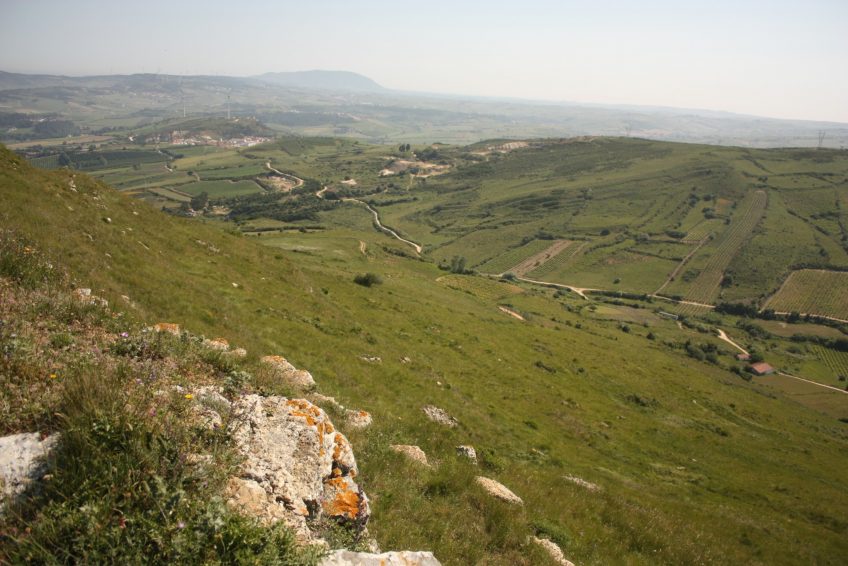
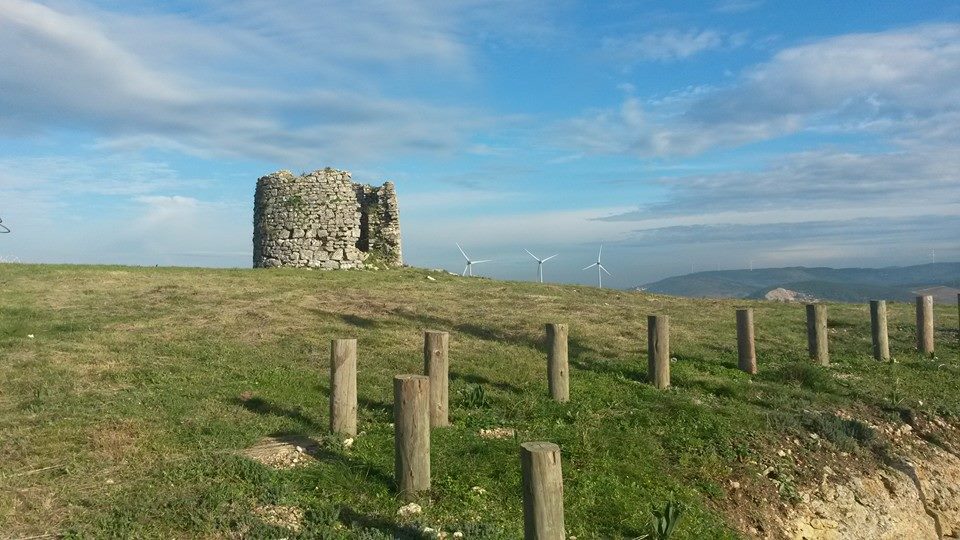
Day 4: Sintra
How to get there?
1. Bus Rede Expressos Torres Vedras-Lisbon
- Duration: 45 mins
- Approximate cost: 6€
2. Train Comboio de Portugal Lisbon – Sintra
- Duration: 35 mins
- Approximate cost: 2€
Total of approx. time: 1h30.
Let’s go to our next destination, Sintra, the capital of romanticism and a magical and mythical place that knows how to charm anyone entering. The city was classified in 1995 by UNESCO as a Cultural Landscape and a World Heritage Site.
All sites are accessible easily by bus or walk. Start by discovering the centre of the city and the Palácio Nacional de Sintra, the oldest Palace in Portugal which can also be easily recognized thanks to its two conical chimneys. Dive into the history of Portugal and follow the steps of the majority of kings and queens of Portugal who spent some time in residence in the Palace.
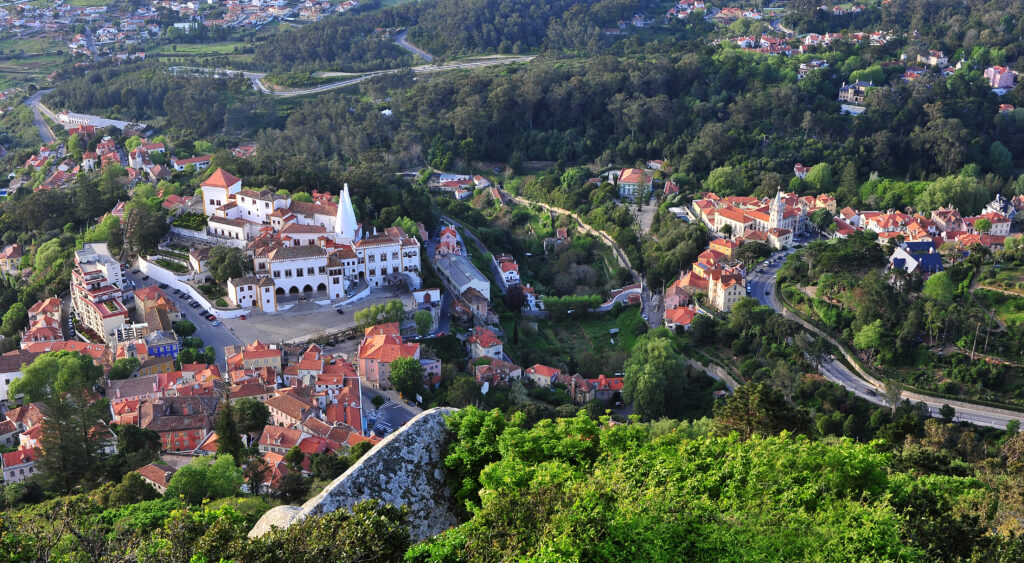
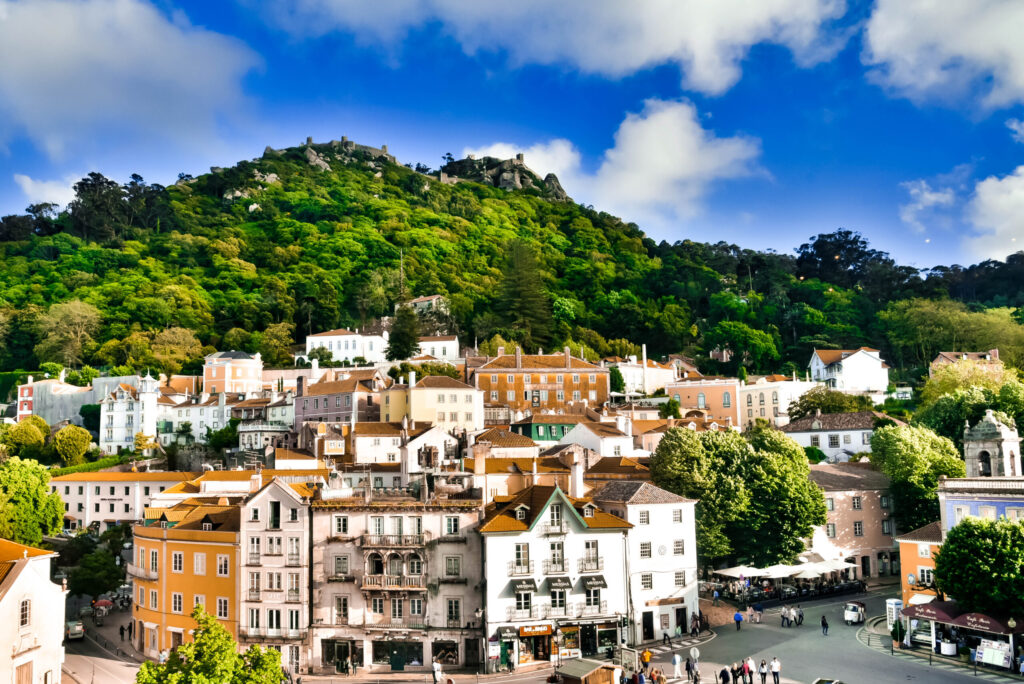
Then you also should not miss the very colourful Palácio Nacional da Pena as well as the Castelo dos Mouros. Those two castles are very different and worth a visit. One is very colorful with red, yellow, or purple walls while the other one is a Moorish Castle dating back from the 8th century. From the Castelo dos Mouros, there is a walk along the walls, on the ramparts, from which you have a great view over the town, on the Palacio da Pena and further on the ocean.
Note: these points of interest are very popular and can therefore be quite busy sometimes. We advise you to privilege the lower season to visit them and to book tickets online in advance if you want to avoid the queue.
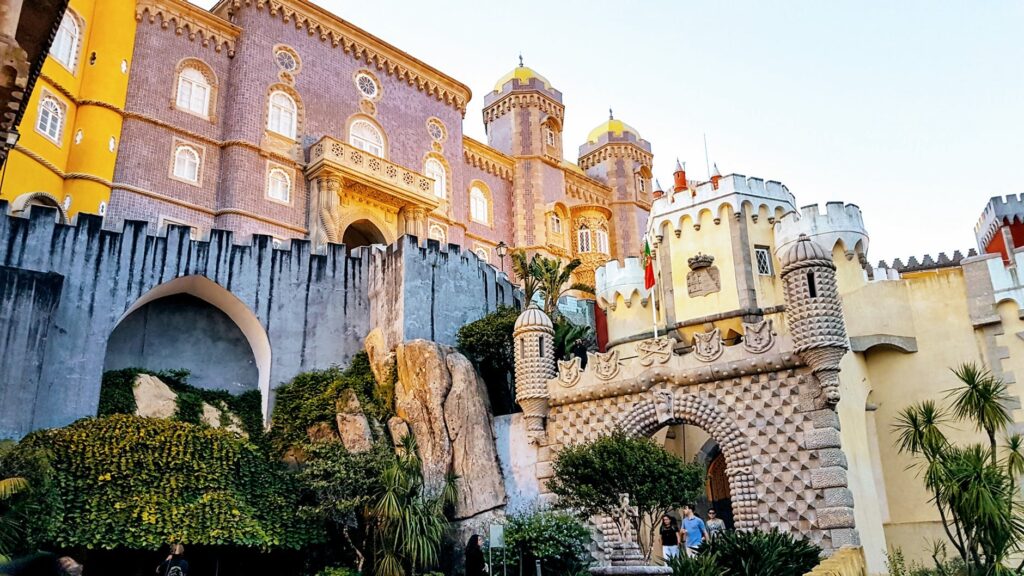
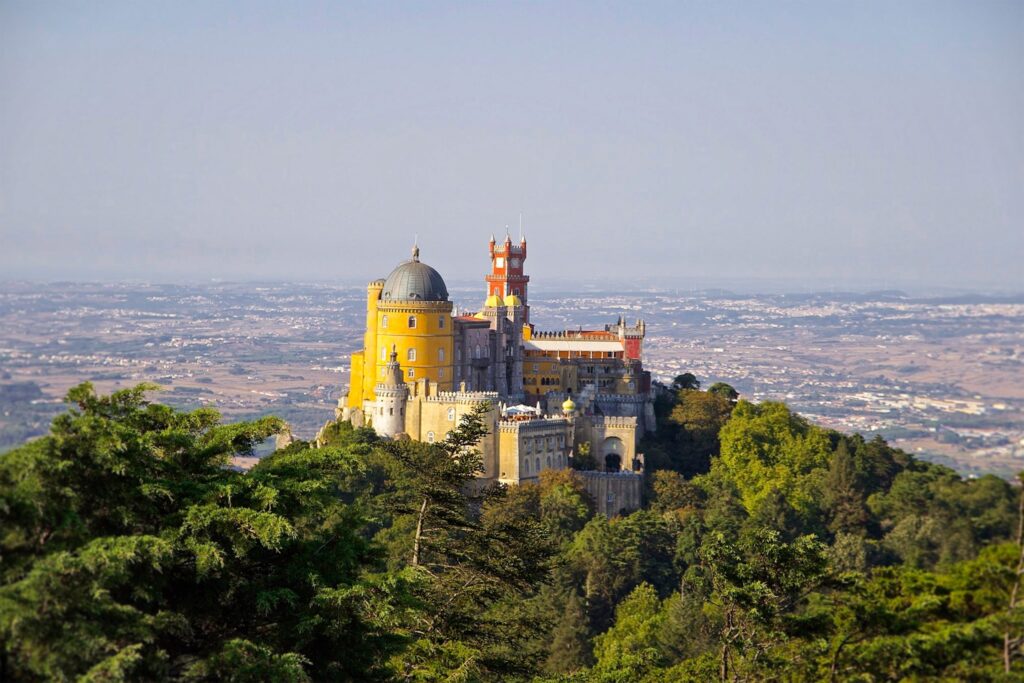
Spending the night in Sintra, you will feel privileged as you will feel you have the city for yourself. Indeed, most of the people go back to Lisbon or Cascais at the end of the day and the evenings and early mornings in Sintra are therefore particularly peaceful and enjoyable.
Day 5: Sintra
On day 5, enjoy the western part of the town. These points of interest usually are less popular and thus with fewer people than the ones of the previous day.
Enjoy the Quinta da Regaleira, a palace and chapel of Romantic style and architecture embedded in a luxurious nature. Also, take a look at the impressive wells that were previously used for initiation rites.
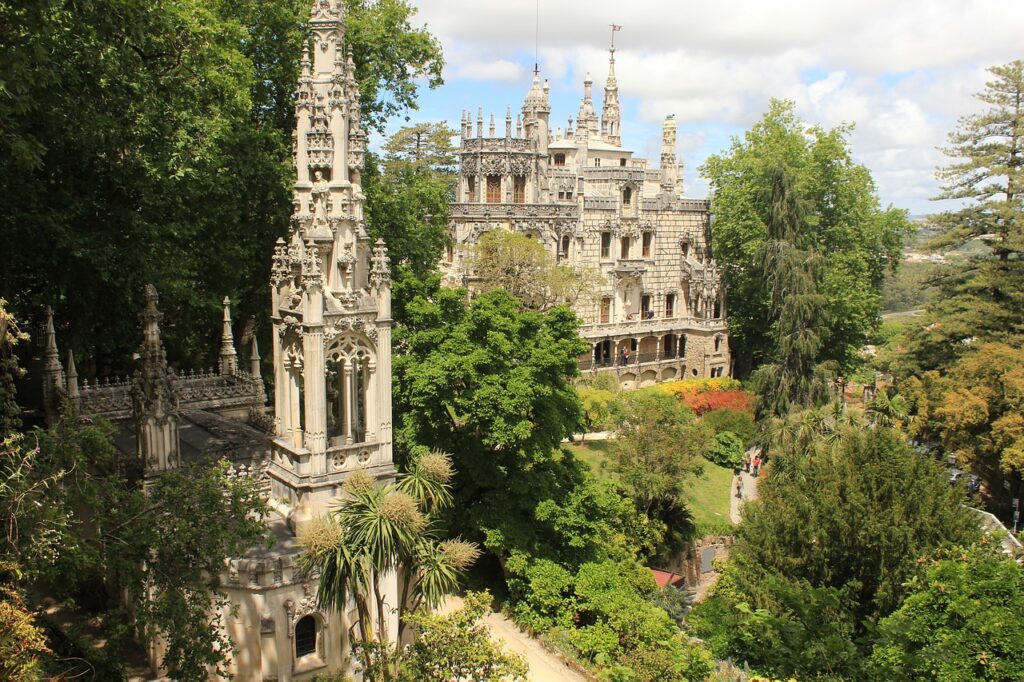
Finally, the Palácio de Seteais and Palácio de Monserrate and its magnificent garden are places you will want to visit. The Palácio de Monserrate is a quite colorful palatial villa where you can have an unforgettable experience.
Alternatively, great hiking trails in the Parque Natural de Sintra- Cascais are also an activity to consider. Lots of hiking possibilities for all levels are available to discover the rich natural heritage of Sintra and those preserved sand-dunes, forests, lagoons, and cliffs. Hopefully, you will be able to spot wild animals, birds, or rare eagles.
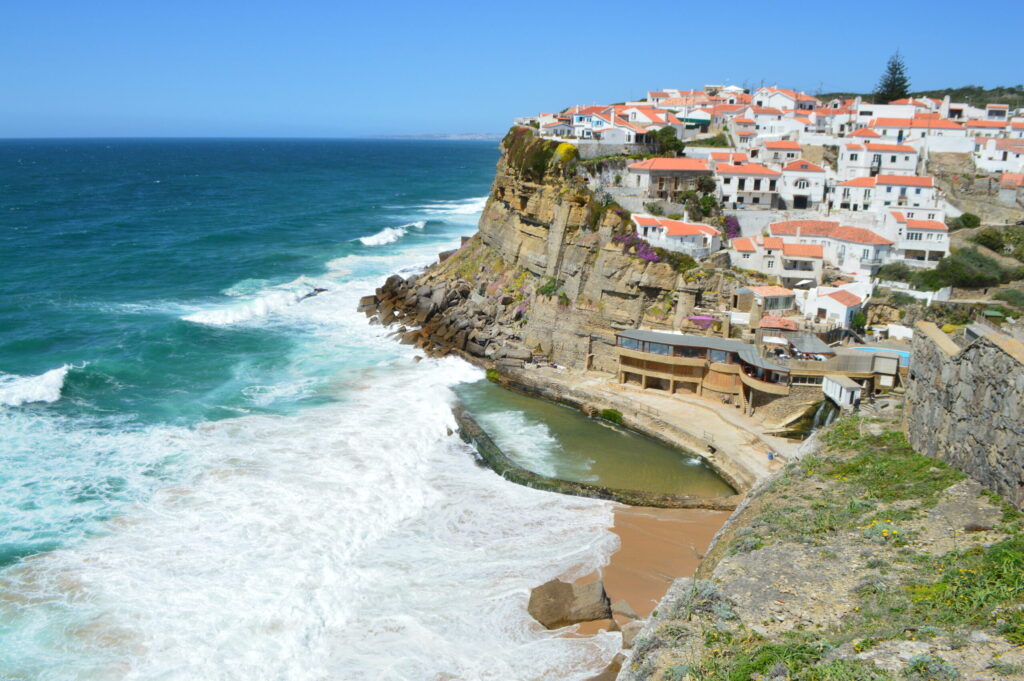

Day 6: Cascais
On the next morning, hop on a local bus to Cascais. It will only take you 40mins to reach Cascais. Please note that this bus can also be taken on the previous day if you want to have more time in Cascais.
How to get there?
- Local Bus ScottURB Sintra – Cascais
- Duration: 40 min
- Approximate cost: 2€
You can also walk on the 3km Cascais-Estoril promenade to go to the small village of São João do Estoril.
Finally, the Santa Marta Lighthouse Museum is worth a visit to learn more about the lighthouse’s history in a coastal area.
Of course, here also, do not forget to taste the Portuguese gastronomy and wines and visit the local market to smell the scents of the local products.
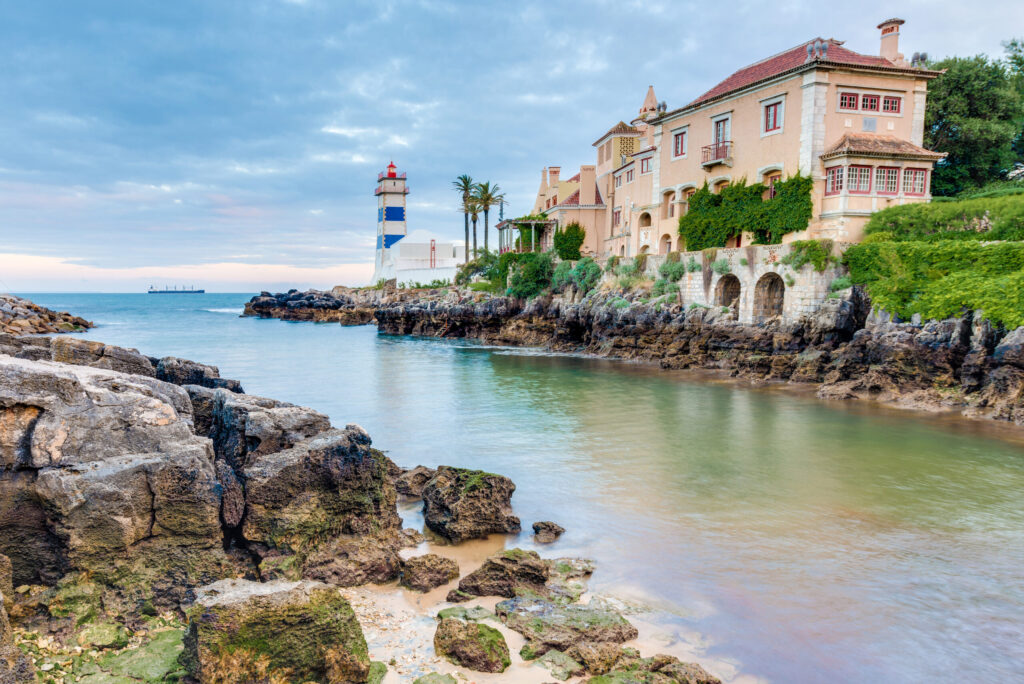
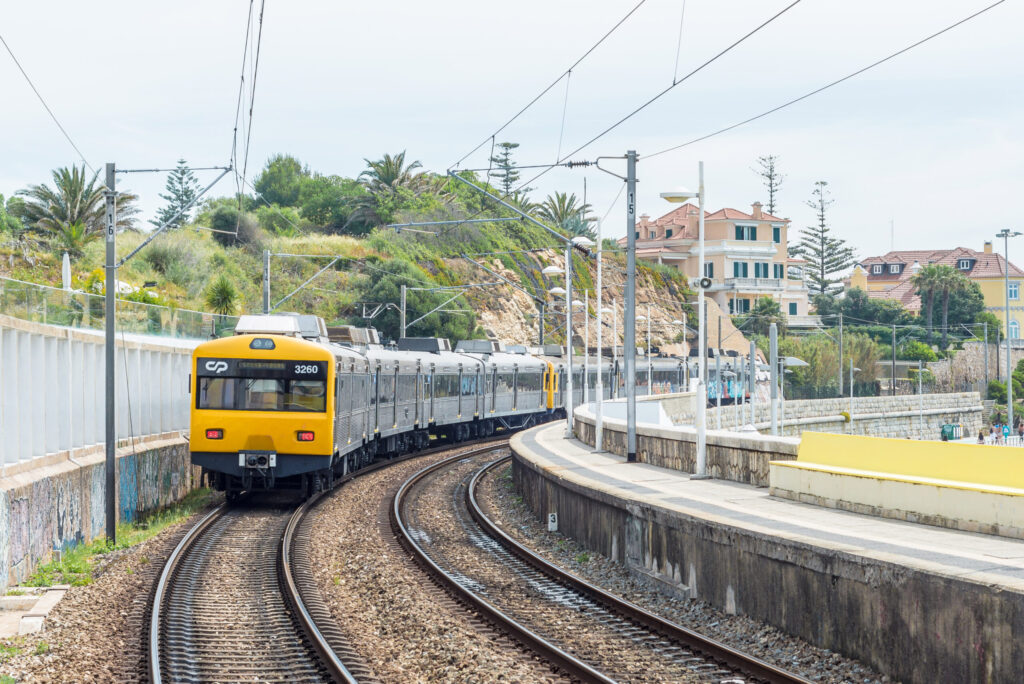
Day 7: Lagos
How to get there?
1. Train Comboios de Portugal: Cascais – Lisbon
- Duration: 40mins
- Approximate cost: 2€
2. Bus Rede Expressos: Lisbon – Lagos
- Duration: 3h45
- Approximate cost: 20€
Total approx. time: 4h25
The last destination of our trip is Lagos, in the Algarve region. Being located in the South of Portugal, Lagos also has a different climate and of course warmer water temperature. Enjoy the beautiful views of the rocky cliffs, of the coastline, and let yourself be carried by the peaceful sound of the waves and the smell of the ocean. Privileged points to enjoy it include the Miradouro da Ponta da Piedade.
From Lagos, take a boat trip to have a view from the ocean to the coast, to its magnificent caves and you will maybe be lucky enough to have curious dolphins playing around with the boat or even just to spot them at a distance.
In the evening, wander around in the city, and try the Algarve cuisine. Seafood is of course unavoidable in Portugal and especially in this region so order a Cataplana dish, the local specialty of south Portugal and enjoy the mix of prawns, littleneck clams, and chorizo sausage.
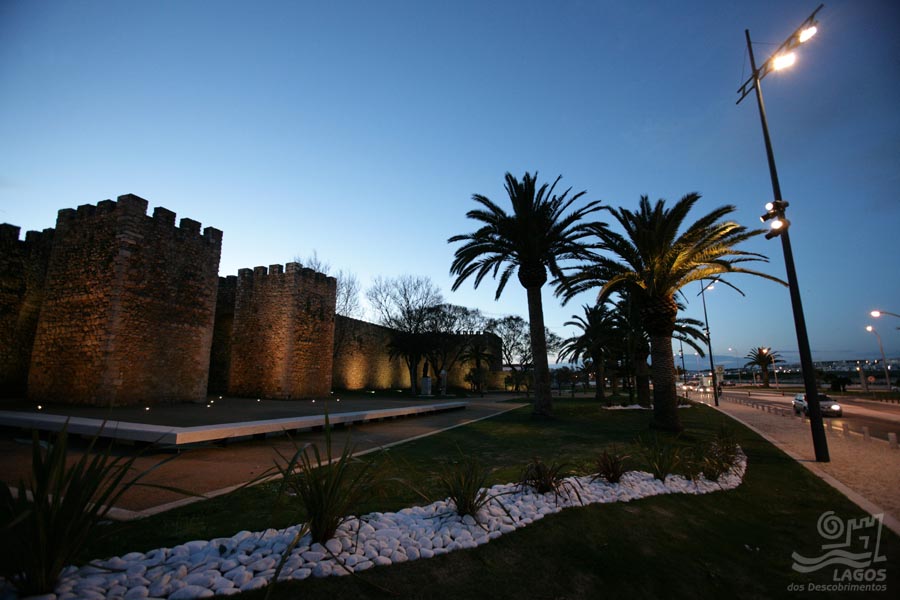

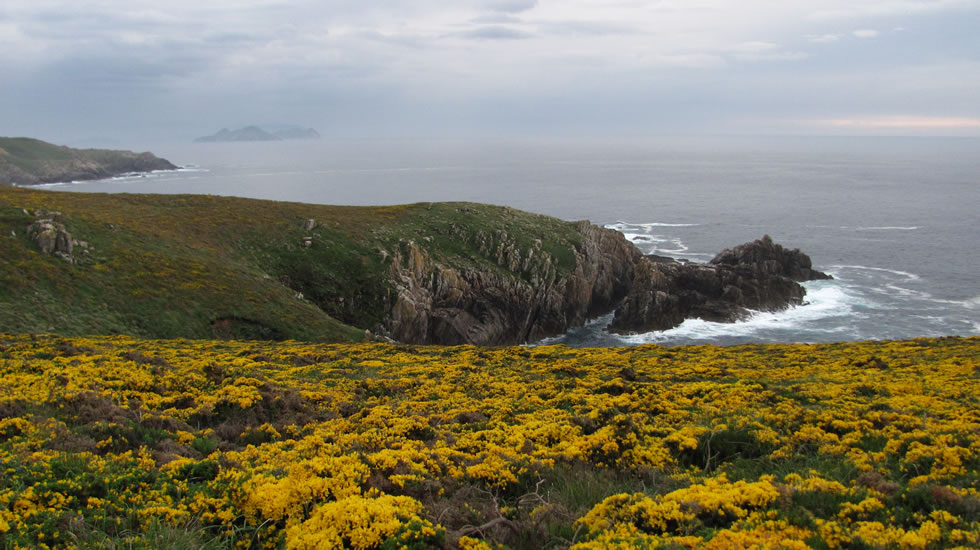
Day 8: Finish
According to where you want to go then, you can spend a bit more time in the Algarve, continue your trip, or otherwise, the closest international airport is located in Faro, easily accessible by train or bus from Lagos.
This concludes our guide in Portugal, and we really hope you will enjoy this trip full of discoveries in terms of nature, culture, and traditions in 6 very varied destinations that are thriving to be more sustainable and that are working for a better future.
At the end of this trip without a car, the cost of transportation is estimated at around 60€ for 7 days. If you had to rent a car and pay for fuel, it would be much more, without taking into account the environmental cost! So a personal car is not always essential and there are ways to travel at a slower pace using the public transportation of the place and blending in with the local population.
Note: you can easily extend or shorten this trip according to your wishes.
Visit this page to learn more about other green destinations in Portugal.




